Are you navigating the complex world of subcontractor environmental compliance? Ensuring that your partners adhere to environmental regulations can be a daunting task, but it's essential for protecting our planet and your project's integrity. In this article, we'll explore key strategies for effectively communicating compliance expectations to your subcontractors. Ready to dive deeper into how you can streamline this process? Keep reading!
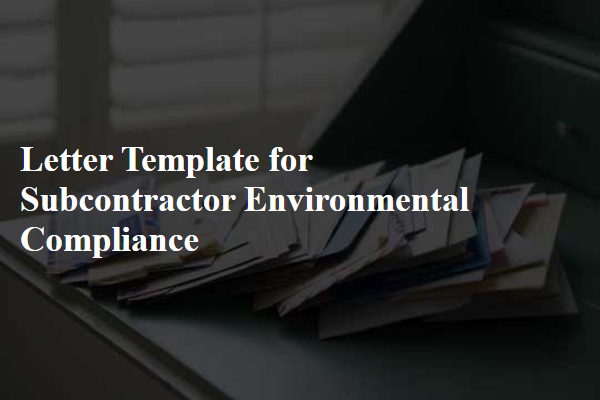
Regulatory Requirements
Environmental compliance for subcontractors involves adherence to specific regulatory requirements set by governmental agencies. The Environmental Protection Agency (EPA) mandates that subcontractors operating in construction or manufacturing must comply with the Clean Air Act, which includes limits on emissions of pollutants, particularly volatile organic compounds (VOCs) in urban areas. Additionally, the Comprehensive Environmental Response, Compensation, and Liability Act (CERCLA) requires reporting of any hazardous substance releases into the environment, with penalties for non-compliance reaching into the thousands of dollars per day. Local regulations may also apply, such as state-specific waste management rules under the Resource Conservation and Recovery Act (RCRA). Subcontractors must conduct regular environmental training sessions to ensure all employees are aware of their responsibilities regarding hazardous materials and waste disposal protocols. Following these requirements is essential to avoid fines and ensure the sustainability of operations in various locations, from urban centers to rural construction sites.
Compliance Monitoring
Compliance monitoring for subcontractors is essential in maintaining environmental standards during project execution. Detailed evaluations ensure adherence to legal regulations, such as the Clean Air Act and the Clean Water Act, which govern emissions and effluent discharges. Regular audits, typically conducted quarterly, assess compliance and identify potential risks or violations. Environmental management plans (EMPs) outline specific practices subcontractors must follow, including waste management protocols and pollution prevention strategies. Additionally, on-site inspections help verify the implementation of best practices in areas like hazardous materials handling and spill response. Documentation of compliance efforts, such as reports on waste disposal and resource consumption, is critical for demonstrating accountability and addressing any non-compliance issues swiftly.
Documentation and Reporting
Subcontractor environmental compliance documentation is crucial for maintaining adherence to regulations and standards in the construction industry. Key documents include Environmental Management Plans (EMPs), which outline specific environmental protection measures, and Site Inspection Reports, detailing compliance with local regulations, such as those enforced by the Environmental Protection Agency (EPA). Regular monitoring logs are essential for tracking compliance with waste management practices, including recycling rates and proper disposal methods for hazardous materials. Incident Reports documenting any environmental breaches must be filed immediately, ensuring transparency and prompt corrective actions. Furthermore, training records for workers on environmental practices must be maintained, demonstrating ongoing commitment to environmental stewardship at project sites.
Environmental Training
Subcontractor environmental compliance mandates specialized training programs tailored to the specific regulations of the industry. Environmental training programs, such as those required by the Environmental Protection Agency (EPA) guidelines, focus on educating personnel about hazardous waste management and proper recycling protocols. These training sessions, which may occur quarterly and last several hours, equip workers with essential skills to identify and mitigate environmental risks at construction sites in urban areas like New York City or Los Angeles. Furthermore, certification courses often involve hands-on instruction about the proper use of personal protective equipment (PPE) and spill response procedures, ensuring preparedness for unexpected incidents. Continuous evaluations and updates to training materials reflect the latest regulations and best practices for sustainable practices in compliance with local laws and regulations.
Risk Management and Mitigation
Environmental compliance for subcontractors involves comprehensive risk management and mitigation strategies to adhere to regulations. The Environmental Protection Agency (EPA) guidelines require subcontractors to conduct assessments identifying potential environmental hazards, such as waste disposal and water contamination. Detailed record-keeping of activities and materials used on-site, like hazardous substances and emissions levels, is crucial in this process. Implementing best practices, including spill prevention plans and routine training sessions for employees, can significantly reduce risks. Regular audits and inspections, conducted quarterly, ensure compliance and identify areas for improvement, fostering a culture of environmental responsibility. Engaging with environmental consultants can provide valuable insights tailored to specific projects, enhancing sustainability efforts in construction or industrial activities.
Letter Template For Subcontractor Environmental Compliance Samples
Letter template of subcontractor compliance with environmental regulations
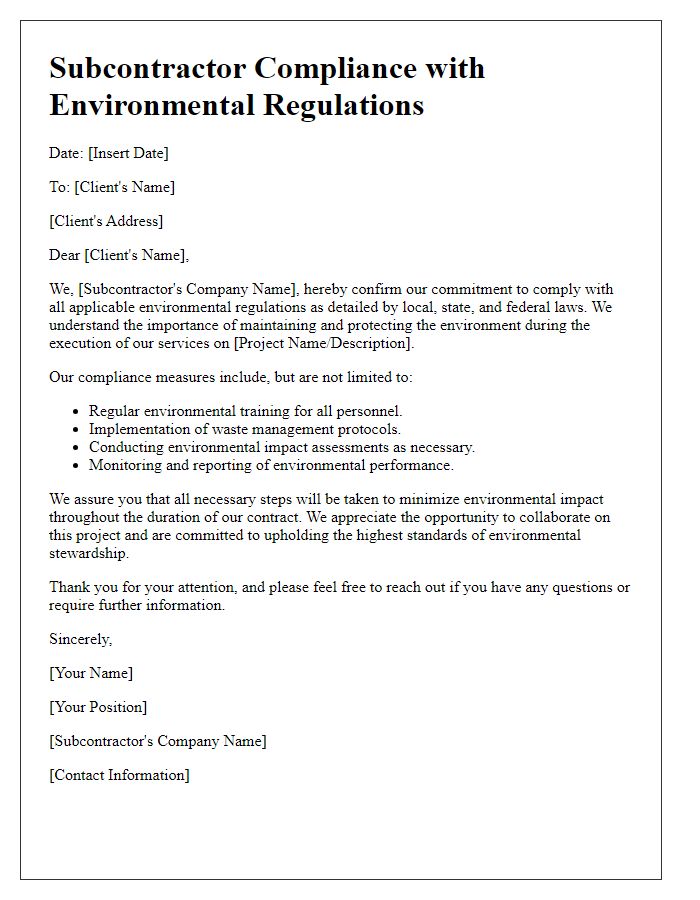
Letter template of subcontractor environmental responsibility acknowledgment
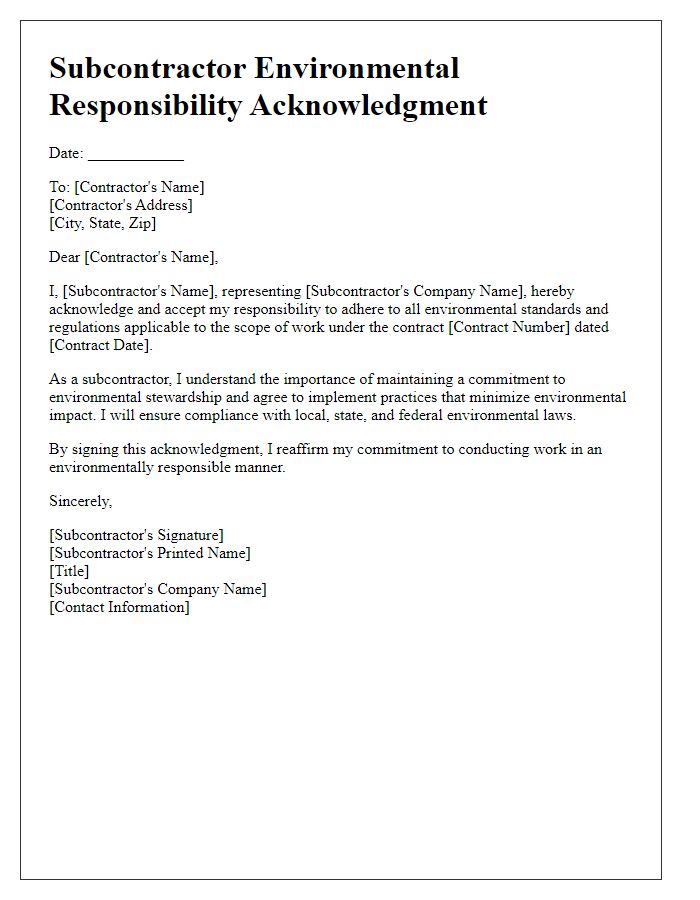

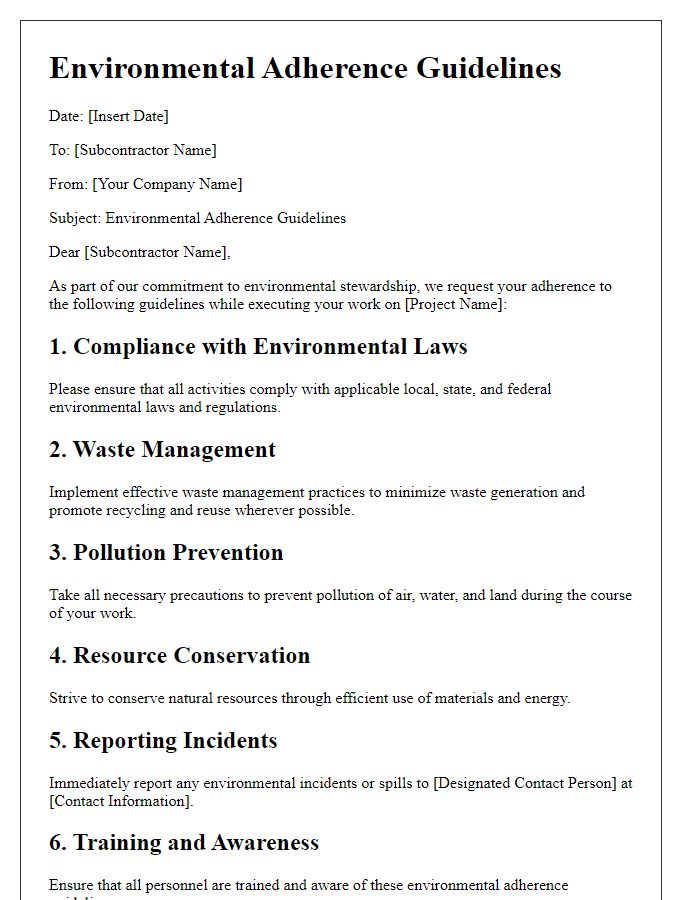
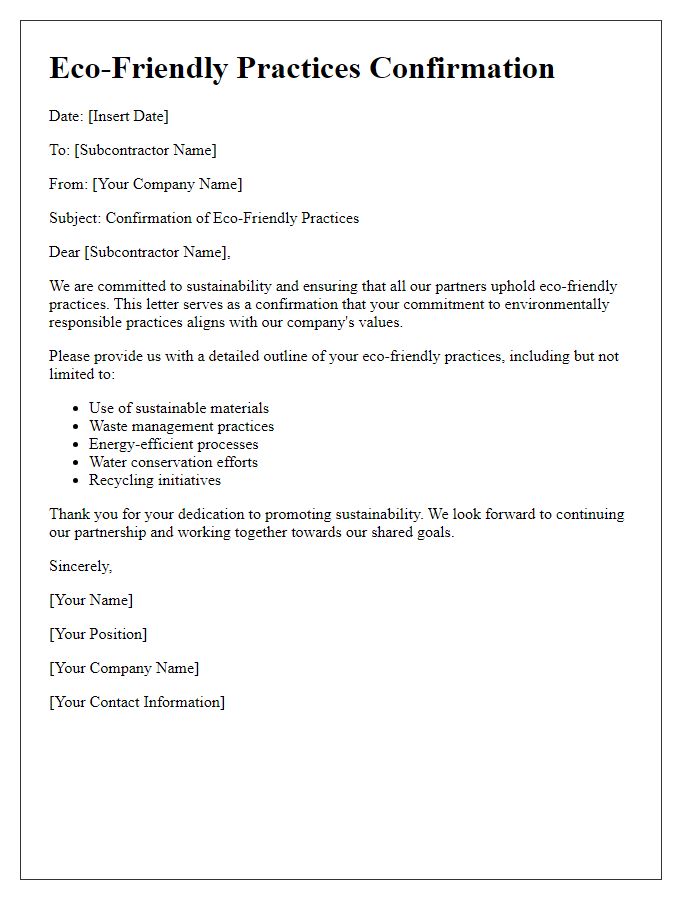
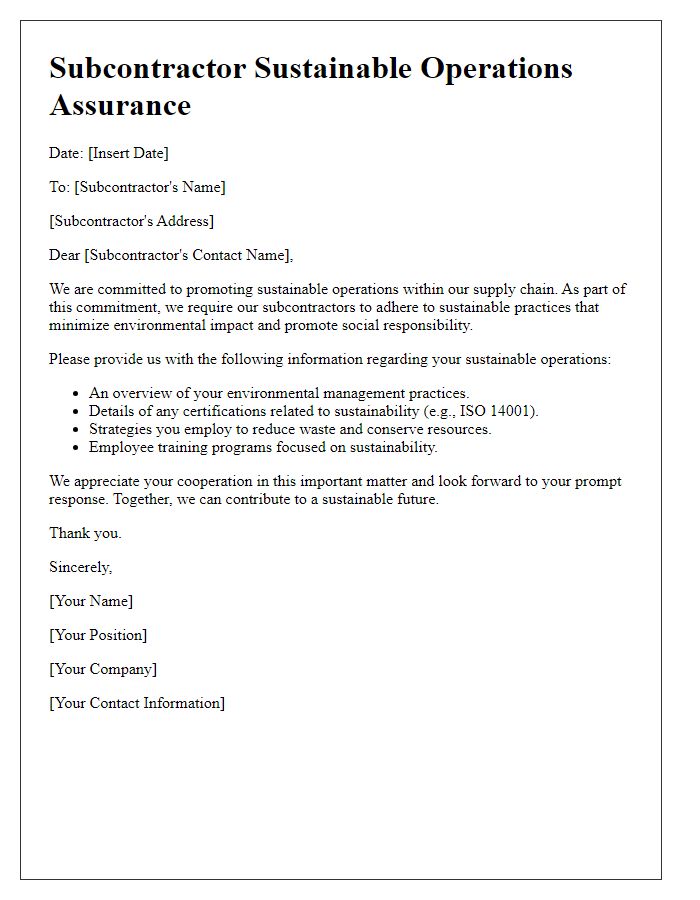
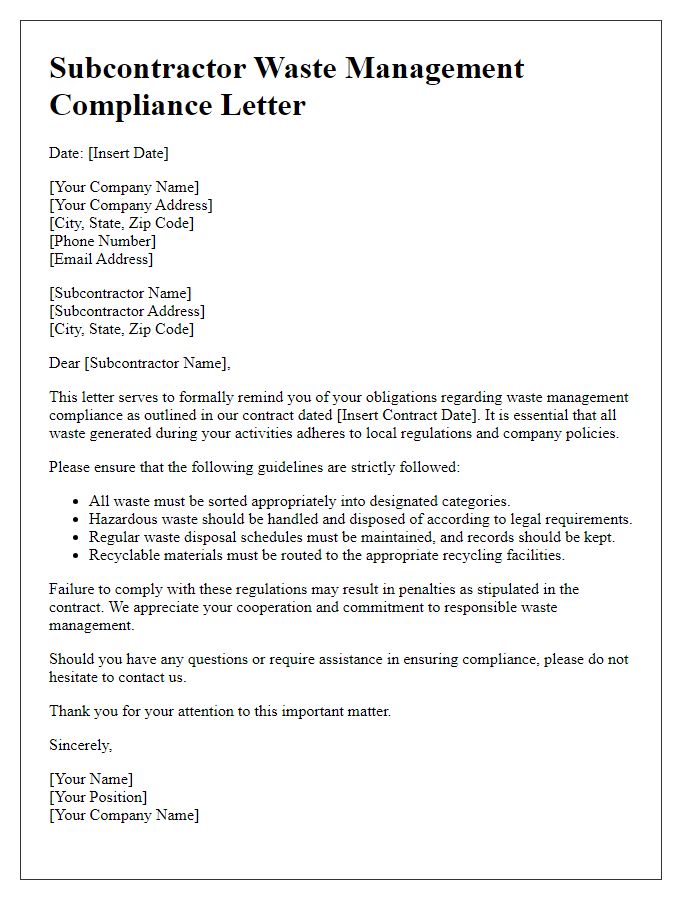
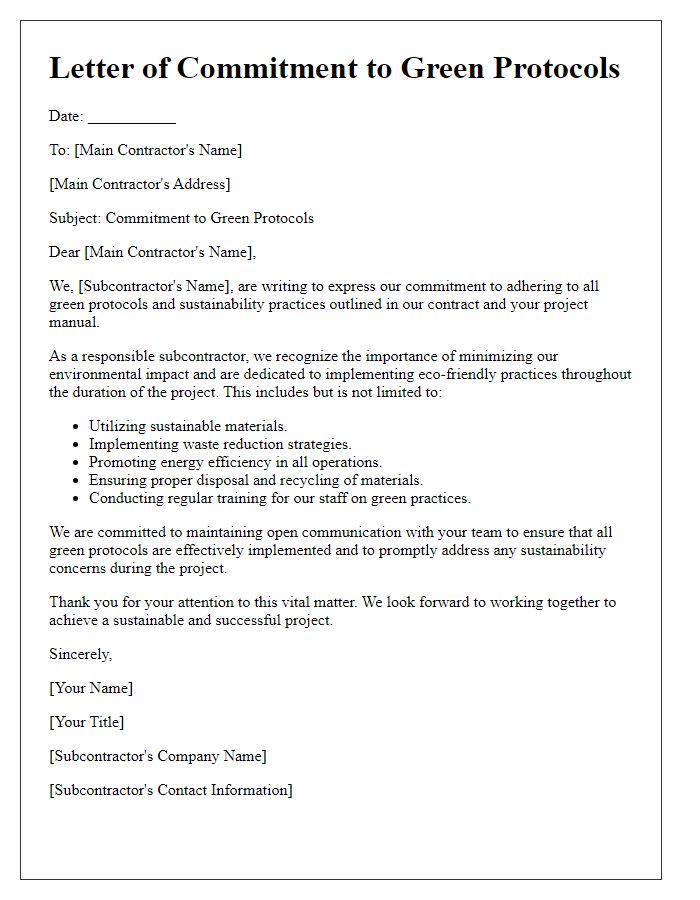
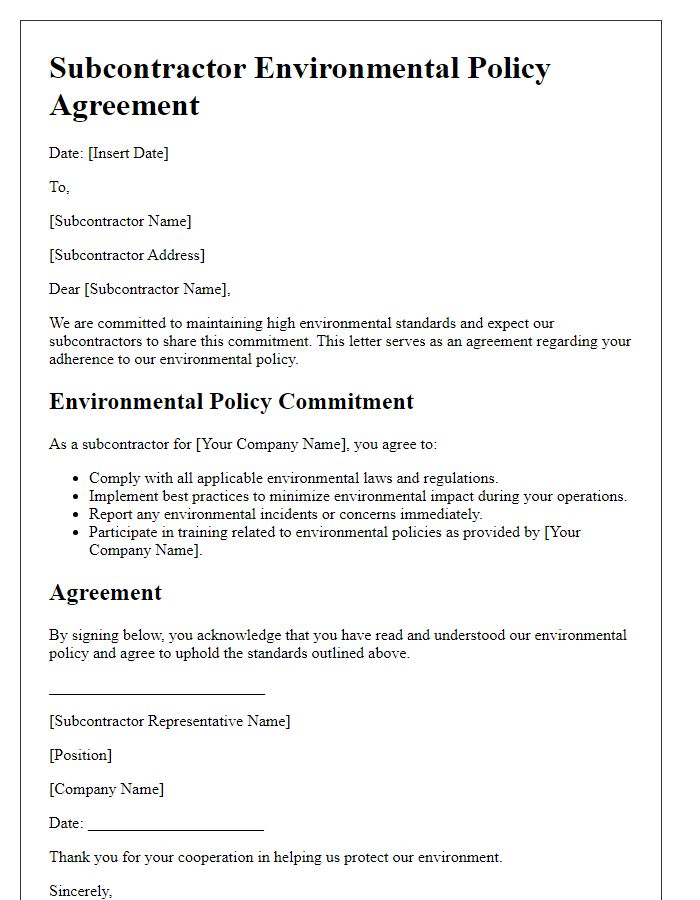
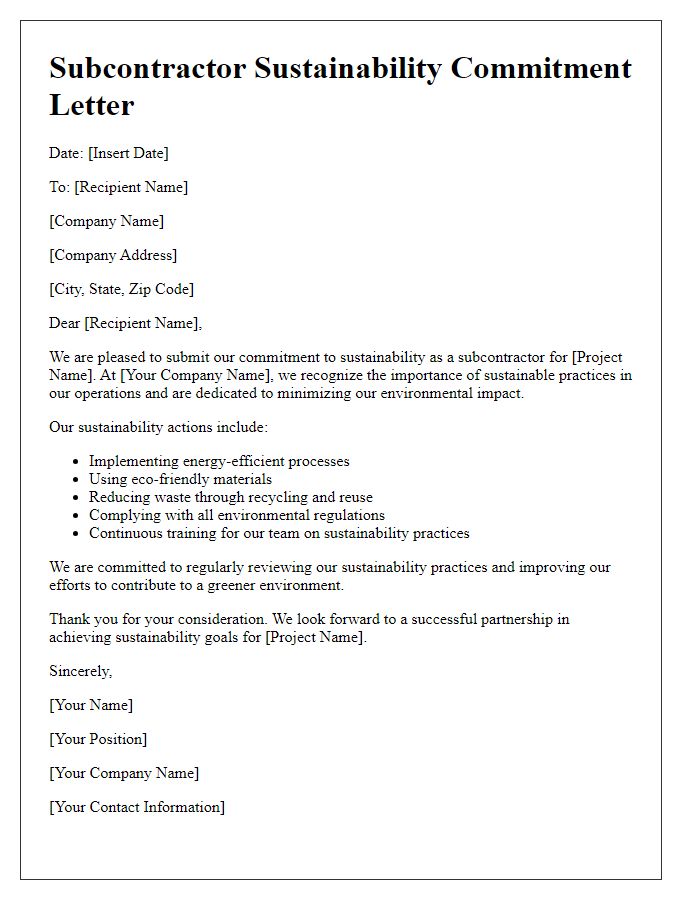
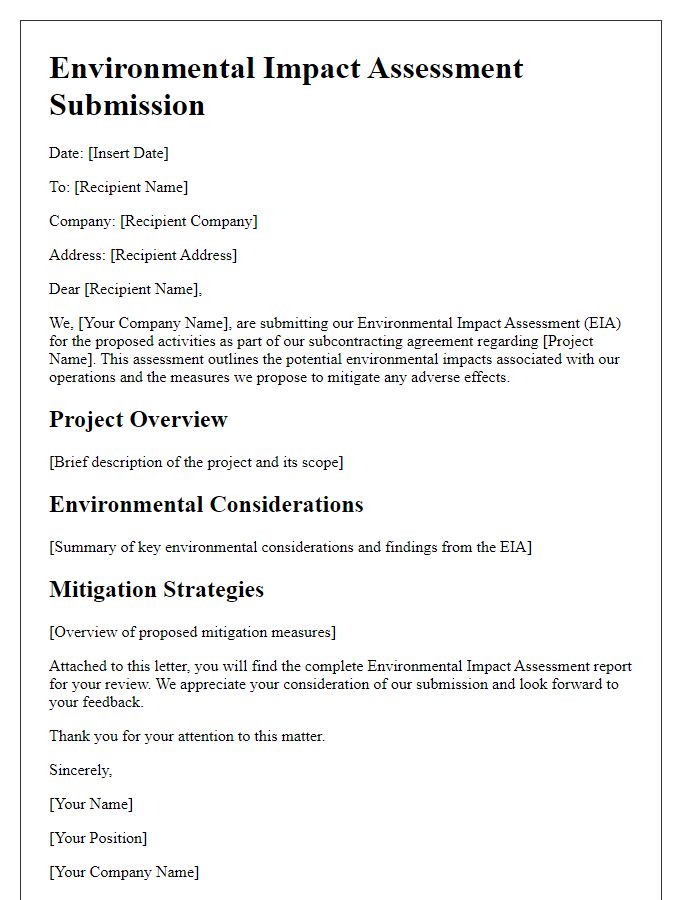


Comments